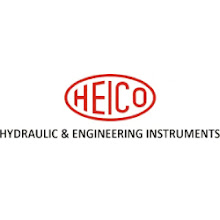Mechanical qualities of materials such as metals, polymers, and rubber are evaluated using universal testing machines. A servo hydraulic universal testing machine offers the best possible performance in material testing. This type of machine is an essential tool in testing engineering components, automobile parts, and aircraft components. In this essay, you will learn how to operate a servo hydraulic universal testing machine.
The first step in operating a servo-hydraulic universal testing machine is to ensure that the machine is correctly assembled and calibrated.Before operating the machine, ensure that all of its components are properly placed and securely tightened. After this, calibration is necessary to ensure the machine's accuracy. Calibration involves using a known force to test the machine's accuracy and adjust it accordingly.
The second step is to switch on the machine and engage the hydraulic pump. When the hydraulic pump is engaged, it generates hydraulic pressure that powers the machine's hydraulic system. The servo hydraulic universal testing machine comes with a control panel that is used to set the test parameters. The operator selects the type of test they want to conduct, sets the loading rate, and selects the test start and stop points.
The third step is to position the material to be tested in the machine's grips. The grips are designed to hold the material in place during testing. The machine's software streams test data to a computer or onto the machine's screen, and it allows the operator to see the testing progress. As the testing progresses, the operator will observe the machine display stress and strain data, which they will use to evaluate the mechanical properties of the material.
Benefits of using a servo-hydraulic testing machine
A servo-hydraulic testing machine is a versatile and valuable tool for engineers and researchers in various fields. This machine uses hydraulic power combined with advanced hardware and software to provide accurate and precise measurements, making it ideal for testing structures and materials under extreme conditions. One of the primary advantages of employing a servo-hydraulic testing machine is that it can imitate real-world conditions, allowing any faults with a product or material to be identified before it is distributed to the market.
Another advantage of employing a servo-hydraulic testing equipment is that it can perform a variety of tests. With its advanced software and hardware, it can perform tensile, compression, and bending tests, as well as fatigue and dynamic tests, among others. This versatility makes it an ideal tool for different industries, including aerospace, automotive, and manufacturing.
Servo-hydraulic testing machines are highly accurate and reliable. With their precise load control and advanced sensors, these machines can provide accurate measurements, ensuring that the results are consistent and repeatable. This ensures that data collected from tests can be trusted and that the results are not influenced by other factors. The high accuracy of these machines also ensures that the data obtained is useful in making informed decisions.
Finally, another advantage of adopting a servo-hydraulic testing machine is that it can save time and money. Engineers and researchers may test and analyse various materials and products before they are introduced to the market thanks to its ability to imitate real-world situations. This decreases the amount of potential flaws and errors, saving time on retesting and lowering the entire project cost. Additionally, the advanced software in these machines enables continuous testing, which saves time by allowing engineers and researchers to collect data without stopping and starting the machine repeatedly.
Conclusion
Servo-hydraulic testing machines are highly versatile, accurate, and reliable tools that offer many benefits to different industries. These machines can simulate real-world conditions, perform a wide range of tests and save time and costs, and provide accurate and reliable data that can be trusted for informed decision-making. As technology continues to advance, it is expected that new and improved models of the servo-hydraulic testing machine will emerge, further enhancing their abilities and expanding their applications.




0 Comments